
Anybody who loves chameleons and has a chameleon as a pet knows that chameleons surely do love feeding on insects, especially bugs. In the wild, there are many different varieties of chameleon bugs that they can feed on, some of which are healthy, while others can be dangerous for them as well. Although all animals and insects have been blessed with great survival instincts, they know what they should feed on and what is dangerous for them. Many animals, insects, and reptiles can figure out on their own what plants they should feed on, but sometimes the insects that they feed on can release toxins that can be fatal for them as well.
There is no one to take care of them in the wild; however, in captivity, we can ensure that we feed our reptile friends the best and healthiest food. Chameleons are insectivorous, which means that they primarily feed on insects for survival. And while there are many safe insect options available to feed them, sometimes breeders and owners get confused and might accidently feed them dangerous or venomous insects. Therefore, we have curated the ultimate chameleon bug encyclopedia to help you understand the requirements of the chameleons and feed them the best and safe food.
Nutritional Basics: What Makes A Good Chameleon Bug?
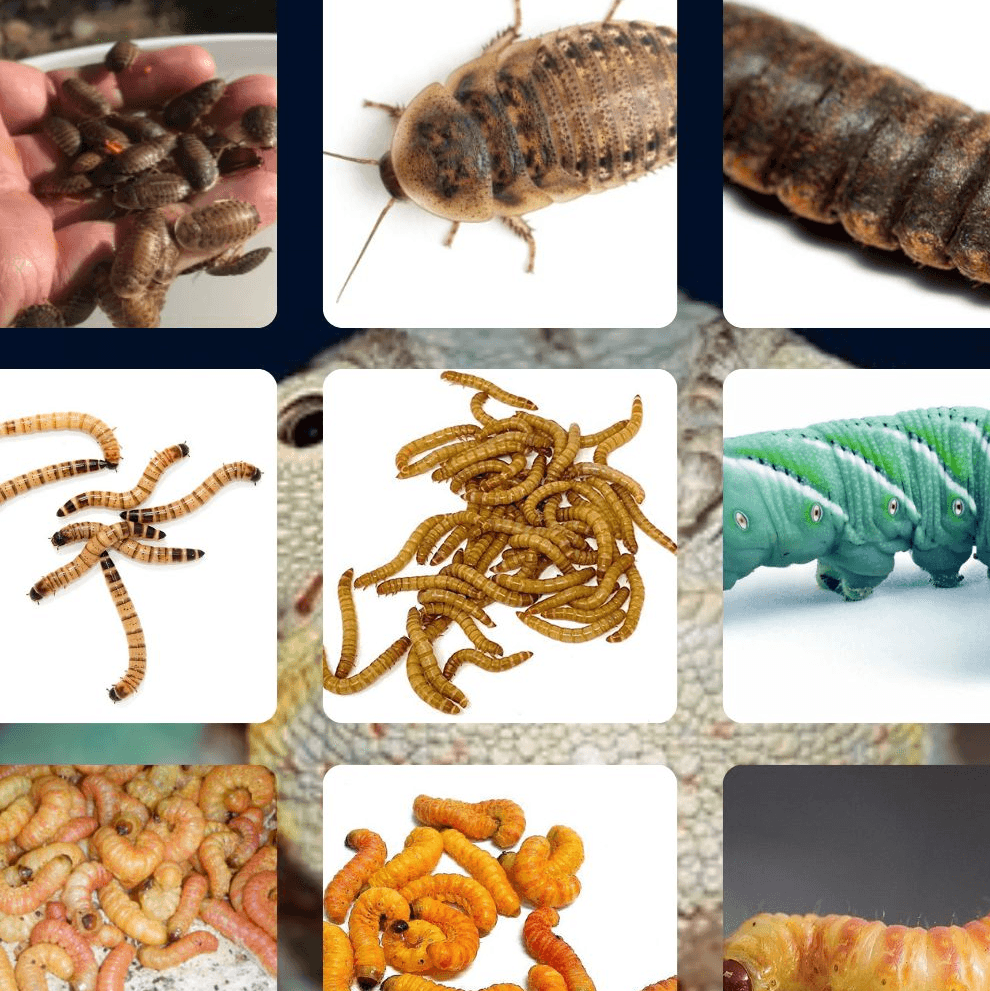
There are a variety of chameleon bugs available in the feeder market that also come under the category of safe chameleon bugs; however, it is important to choose among them the ones that are more likely to satisfy the nutrient requirements of your pet chameleon. For a chameleon bug to suffice for the nutrient requirement of your chameleon, there are three main factors to check for. Number one is the protein content, which is important for muscle growth and overall development of the chameleon. Some research has shown that silkworms, crickets, and roaches have a higher protein content and can make for a good chameleon bug feeder option.
Apart from the protein content, you also need to look for a calcium-to-phosphorus ratio and the hydration level as well. Chameleon has a requirement of high calcium to low phosphorus intake, and chameleon bugs such as Phoenix worms provide that; however, certain insects like crickets and mealworms have an inverse ratio, which means that they have high phosphorus content and low calcium rate, which is dangerous for chameleons. Silkworms and caterpillars provide enough hydration to the host and are considered a great option to keep up the hydration level.
Equally important is to understand and take care of the fat content, digestibility, hydration level, and the content of pesticides that the bugs might have in them. Some bugs, as they appear, such as beetles, have a thick exoskeleton and are hard for the chameleons to digest if they are young and are also dehydrated (which sometimes the owners might not get a whiff of unless they start displaying symptoms). Bugs that are found in the wild might also contain some pesticides that might prove harmful to your pet chameleon. Therefore, it is important to take care of these factors while purchasing bugs to feed your lovely pet.
Safe and Nutritious Bugs for Chameleons (Daily or Weekly Feeders)

Now that you know what makes for a good and nutritious bug to feed your chameleon, we have curated a list of chameleon bugs that meet the factors and are considered safe enough to be fed to your chameleon on a regular or weekly basis. These chameleon bugs contain a good amount of nutrients and can be digested easily, as per the review of many chameleon owners, and therefore are considered perfect for regular feeding.
- Crickets – Widely available, gut-loadable
- Dubia Roaches – High protein, low fat
- Silkworms – Great for hydration, soft-bodied
- Hornworms – Hydrating, easy to digest
- Phoenix Worms (Black Soldier Fly Larvae) – High calcium
- Butterworms – Good occasional treat, fatty
- Locusts (where legal) – Active, protein-rich
- Blue Bottle Flies – Great for enrichment
- House Flies (farm-bred only) – Safe, stimulates hunting
- Red Runner Roaches – Small, active, good for juveniles
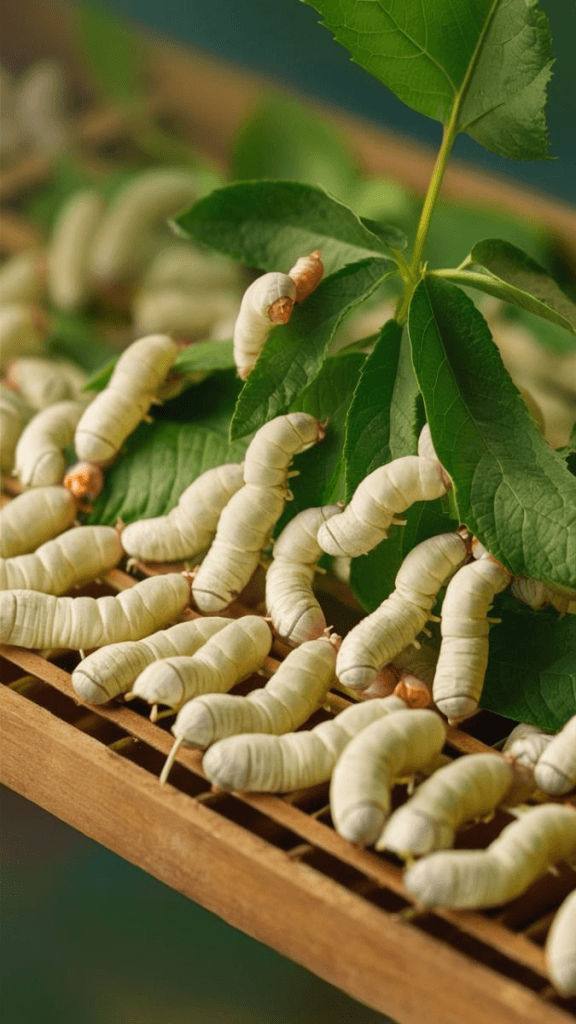
While these insects make for a good feeding option on a regular basis, there are some insects that you can feed your chameleon once in a while since they are safe enough for them; however, they might either have high fat content or may be difficult for chameleons to digest, so giving them these certain bugs can be fed once in a while. Here are some of those insects-
Mealworms – High in chitin, can cause impaction
Superworms – Better than mealworms, but still chitin-heavy
Waxworms – Very fatty, addictive
Fruit Flies – Good for babies, not nutritious long-term
Tebebrio Beetles (darkling beetles) – Low digestibility
Deadly or Dangerous Bugs: NEVER Feed These

In the wild and in captivity, there are some bugs that you should never feed your pet chameleon because of the toxic content in them that can even prove to be fatal for them. Understand that in the wild, most of the chameleons have an idea what they feed upon, as their own habitat suggests, while they do also sometimes feed upon these dangerous bugs, the consequences of which they face alone. However, since we can monitor what our chameleons are feeding on in captive, here is a list of chameleon bugs that you should NEVER feed your pet-
- Fireflies (Lightning Bugs) – Extremely toxic (Lucibufagins can kill within hours)
- Ladybugs (Ladybirds) – Secrete toxic alkaloids
- Boxelder Bugs – Contain toxins harmful to reptiles
- Caterpillars (wild, especially woolly ones) – Many are toxic or irritant
- Bees/Wasps – Risk of stings, allergic reactions
- Ants – Especially fire ants; aggressive and bite
- Centipedes – Venomous, can injure or kill
- Spiders – Potentially venomous, especially wild ones
- Wild-Caught Insects – Pesticide risk, parasite transmission
- Lighting Bugs – Worth repeating: highly fatal even in tiny doses
Creating a Balanced Bug Diet

As important is to understand the type of bugs that can be fed to your precious chameleon, it is also necessary to understand how you can create a balanced bug diet for them. Since feeding your chameleon is not only about purchasing and feeding them bugs but also about nutrients, supplements, and variety to ensure that your chameleon gets a healthy, balanced diet and grows into a healthy and happy pet. The key to long-term health lies in rotating feeder insects, gut-loading them properly, and using the right supplements. Lets try to break it down.
As we all know, not every nutrient and vitamin is present in every food that we eat. Some food has more of something, while others might have some other nutrient in them. Similar is the case with chameleon bugs, where not all the bugs have proper nutrients in them; therefore, it is recommended to rotate between 4-5 types of insects each week so that you are providing enough variety to your chameleon to feed upon and ensuring that they get all the nutrients as well. For example, use crickets, dubia roaches, and silkworms as staples, while adding hornworms and black soldier fly larvae for hydration and calcium balance.

Apart from that, “gut-loading” is yet another crucial feeding habit that you need to incorporate before feeding your chameleons. Gut loading is basically a process where you provide nutrient-dense veggies and greens to your feeders at least a day before you offer them to your chameleon. This ensures that your feeder has the necessary nutrients to provide your chameleon with their staple diet. Keep in mind that what you feed these insects will indirectly be consumed by your pet as well, so try not to feed them sugary and toxic food.
Apart from this, equally important is supplementing. You can not entirely rely on these insects to provide for the nutritional requirements of your chameleon. There are various supplement options available in the market to choose from that will suffice for your chameleons’ requirements and help they develop properly. If you want to read more about chameleon supplements, then click here- Best Chameleon Vitamins: Complete guide to supplements your reptile needs.
Frequently Asked Questions-
1. Can chameleons eat any bug?
No, chameleons cannot eat just any bug. Some insects are toxic, carry parasites, or are hard to digest. Only safe, captive-bred insects like crickets, roaches, and silkworms should be fed. Avoid wild-caught bugs and toxic ones like fireflies and ladybugs.
2. Can chameleons eat morio worms?
Yes, chameleons can eat morio worms (also known as superworms), but only in moderation. They are high in fat and have a tough exoskeleton, which can be hard to digest if overfed. Use them as an occasional treat, not a staple food.
3. Is a chameleon a harmful animal?
No, a chameleon is not a harmful animal. Chameleons are shy, solitary reptiles that do not pose any threat to humans. They don’t have venom or strong bites, and they prefer to avoid confrontation. However, they can get stressed if handled too much, so it’s best to observe them without disturbing their space.
4. Can chameleons eat fireflies?
No, chameleons should never eat fireflies. Fireflies are extremely toxic to chameleons due to chemicals called lucibufagins, which can cause organ failure and death—often within hours. Even a single firefly can be fatal. Always avoid feeding wild or glowing insects.
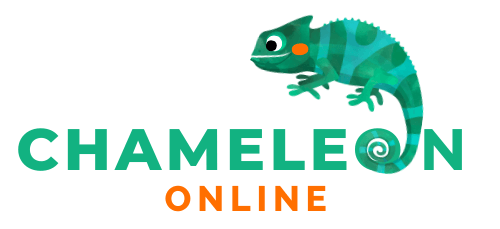

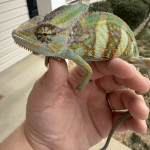

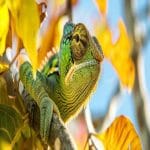
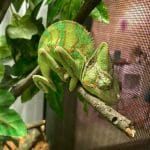
![Best budget UVB for chameleon beginners in [year] image](https://mychameleononline.com/wp-content/uploads/2025/07/image-14-150x150.png)